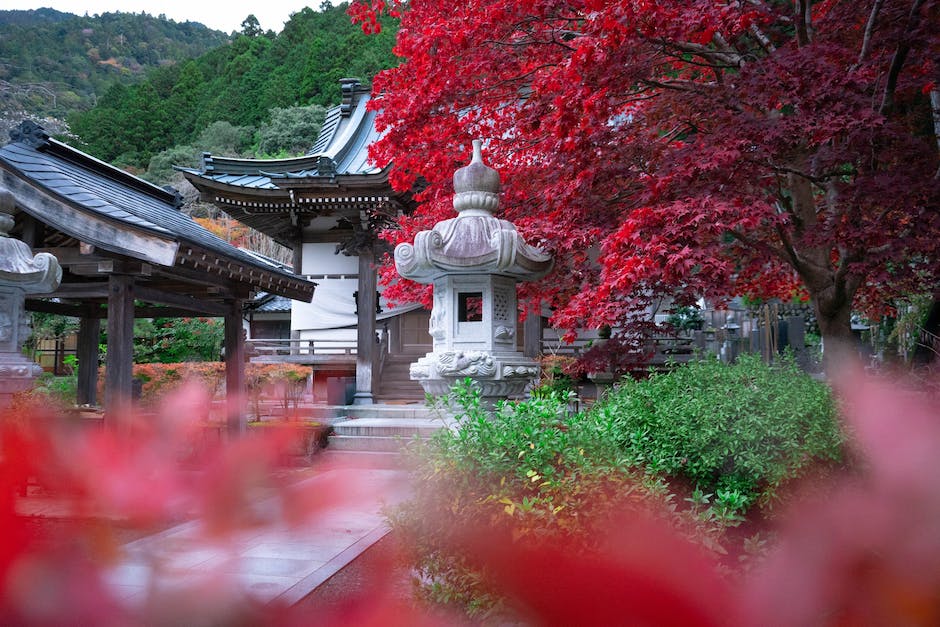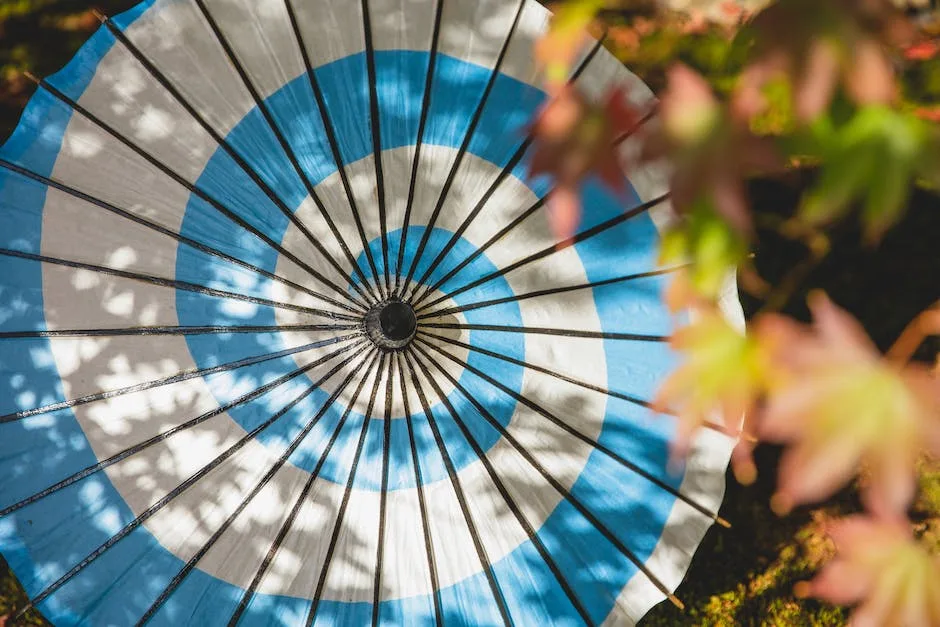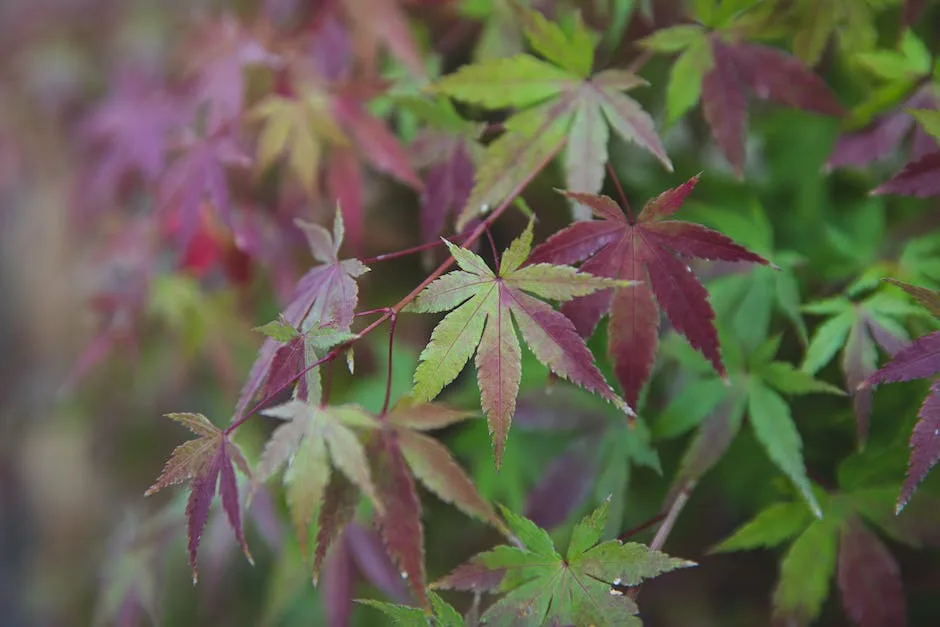Pruning is an important part of keeping your Japanese maple tree healthy and attractive. But when and how you prune depends on the type of tree you have. Many people make the mistake of pruning their Japanese maple tree at the wrong time or in the wrong way, which can damage or even kill the tree. In this article, we’ll give you some tips on when and how to prune your Japanese maple tree.
In late winter or early spring before the new leaves appear, Japanese maple trees should be pruned. You can cut away any dead or damaged branches, as well as any crossed or rubbing branches. You can also thin out the tree to allow more light and air to reach the inner branches.
How do you prune and shape a Japanese maple tree?
Pruning a Japanese maple can be a great way to help keep the tree healthy and improve its appearance. However, it’s important to follow some basic guidelines to ensure the best results. First, focus on removing dead branches mostly from the interior of the tree. Avoid trying to majorly reshape the tree, as this can damage it. Instead, use clean cuts back to lateral branches or buds to create a more natural look. Finally, be sure to disinfect your pruning tools after each tree to prevent the spread of disease.
When you are trimming a tree, it is important not to cut off a large portion of the tree at once. This can send the plant into shock and kill it. Instead, cut a few branches one year, then wait until the next year or the year after that to cut the rest of the branches. This will allow the tree to adjust to the loss of leaves and branches and will help it to stay healthy.
Should I cut the lower branches of a Japanese maple
Japanese maples are beautiful, delicate trees that add a touch of elegance to any garden. But if you prune them incorrectly, you can do serious damage to the tree.
Removing too much foliage will starve the tree of nutrients, so it’s important to prune selectively. If you are going to “limb up” your tree by pruning the lowest branches, avoid stress to the plant by removing only a few at a time, not many at once.
Almost anytime is the right time to prune a Japanese maple, but the best time is in late winter or early spring before the new growth begins.
Japanese maples are best pruned when fully dormant (November to January), as maples bleed sap from pruning cuts at other times, weakening the tree. However, pruning is still best kept to a minimum as the most graceful shape comes from a tree that has been allowed to develop fairly naturally.
What month do you prune Japanese maples?
Pruning your Japanese Maple is important to maintain its health and appearance. You can prune your tree anytime if it is just a snip or two. However, if you need to do heavier pruning, it is best to do it in the summer or winter. Winter is the best time for modifying the branch structure while summer is best for thinning out the branches of your tree.
The only way for a trunk to grow thicker is to let the tree grow freely in a large container, without pruning it for several years. Once you are satisfied with the thickness of the trunk you can train it again and place it in a smaller pot.
What kills Japanese maple trees?
Japanese maples are susceptible to a soil-borne fungal disease called phytophthora when they have “wet feet.” This disease occurs when the roots of the tree are constantly wet, which can happen with poor drainage or during periods of heavy rain. Phytophthora can kill trees branch by branch, so it is important to take measures to prevent it from occurring.
Tree topping is a process that should be avoided if at all possible. It is detrimental to the health of the tree and can cause early failure or death.
What fertilizer for Japanese maple
A slow or controlled release fertilizer is ideal for Japanese maples. Commercially known as Polyon or Osmocote, these fertilizers slowly release nutrients over a period of time, which is perfect for Japanese maples.
When pruning a tree, it is important to remove any diseased or damaged branches, as well as any small branches growing from the lower part of the tree. Trimming the top of the tree can help to limit its height and encourage new branches to grow at the sides, giving the tree a fuller shape.
How do you encourage new branches on a Japanese maple?
You can trim a small, young branch in the middle if you want to encourage more branching, but always cut just in front of a leaf bud. Small and medium-sized cuts can be done with pruners and loppers. Just cut the branch as close to the main trunk or stem as possible.
There are a few different ways to remove a SIM card from an iPhone, and it really depends on the model of the phone as to which method will work best. Sometimes you can just snap the SIM card out with your fingers, but other times you may need to use a small tool to help pry it out. If you’re not sure which method to use, you can always check the iPhone’s user manual for more information.
What happens if you over prune a Japanese maple
It’s important to be careful when pruning Japanese maples, as they don’t respond well to heavy pruning. If you’ve already made drastic cuts, it’s best to wait until next year to shape the tree. If your tree is full of long, thin, vertical “whips,” it’s likely that you’ve pruned too much in previous years. These spindly branches grow in emergency situations.
Japanese maples need dappled or afternoon shade to prevent sun scorch, especially when young. They also need protection from strong winds to prevent them from being uprooted or broken. The soil should be well-drained and moist, but not too wet or dry. Young trees are especially susceptible to late spring frosts, so they need to be protected from them.
How often should you water a Japanese maple?
It’s important to water Japanese maple trees regularly, especially when they’re first planted. Watering every 2-3 days for the first month is ideal, and then you can move to watering once a week. However, be sure to monitor the tree often as windy days can quickly dry out the soil. If you’re planting the tree in the fall, water it once a week when there’s no rain or snow cover. Finally, always provide a layer of mulch around the tree to help protect the roots.
Japanese maple foliage is prone to leaf scorch in hot and dry locations in full sun. Scorched leaves develop brown margins and often drop from the tree by mid to late summer.
How do you keep Japanese maple leaves red
As one of the most popular trees for gardens and landscaping, the red Japanese maple (Acer palmatum) is known for its elegant, fan-like leaves that turn a beautiful red in the fall. But did you know that these trees need a little sunlight to maintain their brightest-red color? That’s right – too much shade minimizes the red shades and the leaves will not be as striking in the shade as they would be if the tree was planted in another area with more sunlight. So when you’re considering where to plant your red Japanese maple, make sure it’s in an area that gets at least a few hours of sunlight each day.
The best time to prune your maple trees is in the late winter or early spring, ideally before they bloom. You can also prune maple trees in the late summer in order to shape them, slow the growth of certain branches, and to get rid of any dead limbs.
Why didn’t my Japanese maple turn red
If your maple is planted in partial sun and not getting at least 6 hours of sunshine per day, it may not change colors. Poor soil and overfertilization may cause your maple tree to not change to red colors in the fall.
console.log( As mentioned above, I always spread a 1 to 2 inch layer of cured, shredded wood mulch or pine straw around my Japanese maples every spring As these organic mulches decompose they will add nutrients to the soil your Japanese maple will appreciate.);
As mentioned above, I always spread a 1 to 2 inch layer of cured, shredded wood mulch or pine straw around my Japanese maples every spring. As these organic mulches decompose, they will add nutrients to the soil your Japanese maple will appreciate.
Why is my Japanese maple not red
Please note that the leaves of your tree may turn green if the tree is not getting enough sunlight. This is because the tree is trying to photosynthesize in order to get the energy it needs to grow. If you think this is the case, you may want to move the tree to a location where it will get more sunlight. Also, please note that too much chemical fertilizer can also cause the leaves to turn green. If you think this may be the case, you may want to reduce the amount of fertilizer you are using. Finally, it is also worth noting that some Japanese tree selections are more prone to greening than others.
Japanese maples can live to be over one hundred years old, though they typically grow just one to two feet per year. With the right conditions, however, these trees can thrive and provide beauty for many decades. When choosing a Japanese maple, it is often best to buy the largest one you can afford, as this will help ensure its long lifespan.
What are common problems with Japanese maples
Japanese maple is susceptible to a number of leaf spot diseases that may disfigure leaves and cause early defoliation. The major foliar diseases are anthracnose, Phyllosticta leaf spot and Pseudomonas tip blight. There are several insects that may attack Japanese maples. Leaf feeders include the Japanese beetle.
Stress on leaves can show up in a variety of ways, but one of the most common is burning on the tips. Sometimes, the roots can become sun baked, which will show up as stress on the leaves. Maples are particularly susceptible to this type of stress, as they have thin bark that can be sun scalded during the first year or two after transplanting.
How do you reduce the size of a maple tree
If you want to reduce the volume of a maple tree’s crown, the best way to do it is by shorten the oldest branches with reduction cuts. This will encourage the plant to keep producing new branches, rather than shortening younger branches.
Most experts agree that pruning more than 15 percent of a maple tree in one year can be detrimental to the tree’s health. It is better to prune a little bit each year to keep the tree healthy.
Can you cut off the top of a tree without killing it
You shouldn’t “stop” trees from growing tall by topping them. If you do manage to stop them from growing, you have killed them. A tree’s leaves manufacture its food (photosynthesis). Repeated removal of a tree’s food source literally starves the tree over time.
Mulching your trees with shredded bark is a great way to insulate the roots and prevent water from evaporating around the tree. Watering deeply twice a week is ideal, but if you have a newly planted tree or a container-grown tree, you may need to water more often.
Final Words
The best time to prune your Japanese maple tree is in late winter or early spring, before new growth begins. You can prune your tree to remove dead or diseased branches, to shape it, or to thin it out. To thin your tree, remove branches that are overcrowded or rubbing together. When shaping your tree, make sure to prune evenly so that it has a balanced look.
There are a few things to keep in mind when pruning Japanese maple trees. First, it’s important to prune during the tree’s dormant season, which is typically in late winter or early spring. Second, be sure to use sharp, clean pruning shears to avoid damaging the tree. And finally, don’t over-prune – only remove dead, damaged, or diseased branches. With a little care, your Japanese maple tree will thrive for many years to come.
Jackson Hill is a passionate arborist with years of experience in the field of trees. He developed his fascination with trees at a young age, spending countless hours exploring the forests and climbing trees. Jackson went on to study arboriculture and horticulture at Michigan State University and later earned a degree in forestry from the University of Michigan.
With his extensive knowledge and expertise, Jackson has become a trusted authority on trees and their impact on the environment. His work has helped shape the field of arboriculture and he continues to be a leading voice in the industry.
